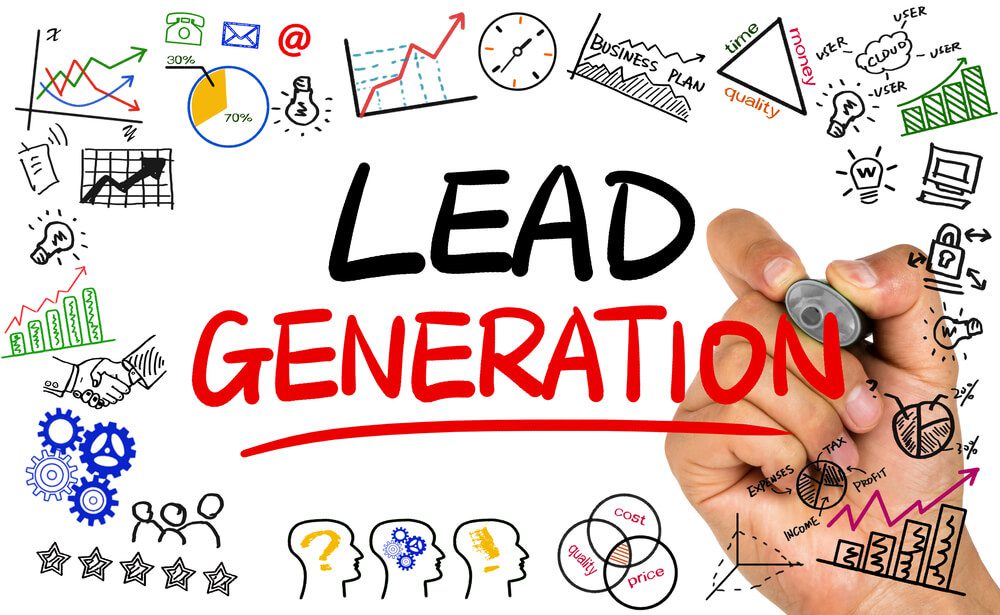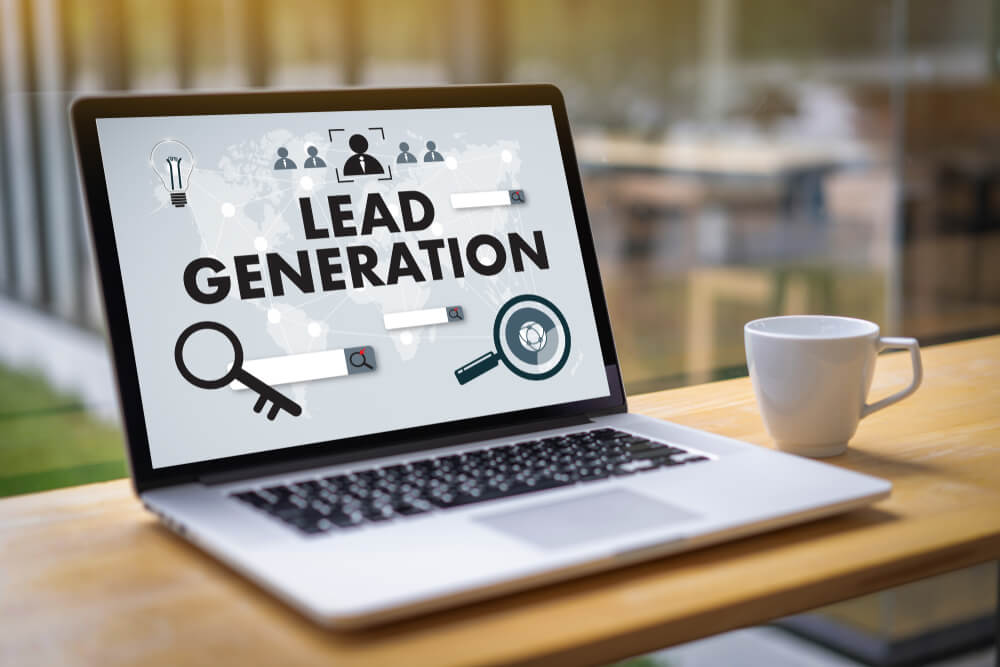
5 of the Best Strategies for Local Lead Generation Success
Are you an Illinois small business that wants to increase its conversion rate despite a limited budget? The answer is Chicago lead generation.
This article discusses the significant benefits of attracting local prospects and five effective strategies based on the 4Ls:
- Design a user-oriented lead magnet.
- Optimize the landing page for your local market.
- Streamline lead-capture forms and techniques.
- Explore the different lead-scoring models and pick the best.
- Keep track of your performance with the right metrics.
If you are ready to learn how to maximize your business’s growth potential, read the article below.
Why Should You Do Local Lead Generation?

Lead generation, as opposed to demand generation, involves identifying potential customers and consistently nurturing them to build relationships. These are individuals (B2C) or organizations and decision-makers (B2B) who have the following:
- Strong intent to buy the product or service.
- Funds to pay for it.
When done right, this marketing technique puts your business a step closer to closing a sale, converting one-time buyers into loyal customers, and even transforming them into brand advocates. However, it can get expensive and difficult to maintain for a small business that usually operates with limited resources.
To take advantage of the same benefits while more easily scaling your company, focus on local lead generation—attracting and capturing potential customers within a specific geographic area. By concentrating marketing efforts on a select demographic, you can offer the best possible conversion or alignment with your business objectives.
5 Strategies to Succeed in Local Lead Generation

The best Chicago lead generation plan revolves around the 4Ls:
- Lead capture: an action wherein a prospect becomes a lead (e.g., someone signs up for your mailing list or secures a spot for your webinar).
- Lead magnet: any valuable incentive or offer that attracts and encourages leads to provide their contact information.
- Landing page: content designed for a specific purpose, especially prompting visitors to take action.
- Lead scoring: a method that assigns a numerical value to leads to assess and qualify them based on criteria such as interest, location, demographics, and engagement.
With these in mind, here are the five local lead generation techniques to consider:
1. Design a User-Oriented Lead Magnet
Do people like free stuff? Yes, but only if they make sense to buyers.
For a lead magnet to work, it should solve a problem (e.g., an ebook on “10 Tips to Boost Your Productivity”) or help leads quickly achieve a goal (e.g., a video series on “5-Minute Workouts for Busy Professionals”). It must also be:
- Relevant to the target audience, especially to their challenges or pain points. An example would be a white paper on “The Ultimate Guide to Social Media Marketing for Chicago Small Businesses.”
- Instantly accessible such as a printable PDF of a meal planning template.
- Unique content with fresh, updated information or data presented from a different angle or perspective. This may include a research report on “Data-Driven Strategies for Marketing Success.”
- Engaging content, for example, an online quiz about discovering your personal style.
- Shareable, e.g., an infographic on the top tech trends in 2023.
You can also boost the effectiveness of these lead magnets by using them at the right time:
| Lead Magnet Type | The Best Time to Use |
|---|---|
| Exclusive discounts | Seasonal promotions, festivals, and holidays |
| Local city guides | Anytime, but most helpful during the off-peak travel season |
| Online and offline events and workshops | Before and during the event to drive registrations |
| Free samples and trials | During a product or service launch |
| Contests and giveaways | Special promotions and when your marketing campaigns need an engagement boost |
2. Optimize the Landing Page for Your Local Market
Paid ads and search engine optimization (SEO) can deliver leads, but they have the ability to only do so much regarding conversions. The make-or-break element here is your landing page. How can you design and write it in a way that touches on the nuances of your targeted local audience?
First, conduct thorough keyword research and choose terms and phrases that align with your marketing goals and user intent. When you optimize your page for either pay-per-click (PPC) or SEO, it appears in front of your desired audience.
Next, enhance it further with these ideas:
- Use your target audience’s language and terminology. Ask how do they talk to one another? What is their tone? Do they use words specific to their region or industry?
- Showcase testimonials and reviews from satisfied customers in the area.
- Include images that feature recognizable landmarks or scenes.
- Highlight discounts, promotions, or events within the location.
- Identify and address the specific pain points or challenges that the local audience faces.
- Tailor call to action (CTA) buttons with location-specific messaging, such as “Order Now for Delicious Treats in Lincoln Park!”
- Create unique landing pages for every location served or targeted.
3. Streamline Lead-Capture Forms and Techniques
Because lead-capture forms are your portal to converting prospects into leads, you want to remove all barriers that may force them to abandon the landing page and not take action. One strategy is to streamline both the design and the process.
You can do the following:
- Limit the number of form fields for essential information. Request only the necessary details for initial contact, such as name and email address.
- Use progressive profiling to collect additional data from leads over time. For example, you can ask for their industry, location, or household income if they wish to download a specific report.
- Enable autofill and pre-fill options to speed up form completion.
- Use clear and concise labels for each form field.
- Implement a single column layout for your form to improve readability and flow. Group related fields together logically and consider using conditional logic to show or hide fields based on user responses.
- Provide real-time inline validation to alert users of errors or omissions while filling out the form.
- Design a mobile friendly lead-capture page.
- Include social media login options as alternatives.
- Clearly communicate your privacy policy to reassure users that their data is secure. Display trust symbols, security badges, or certification seals to enhance user confidence.
4. Explore the Different Lead-Scoring Models and Pick the Best
When resources are tight, you should prioritize who among your leads gets the utmost attention, time, and budget. For this, you score leads.
A Chicago lead generation agency uses its knowledge, expertise, and tools to choose the right model. These include:
| Type of Lead Scoring | Definition | When to Use |
|---|---|---|
| Explicit | Assigning scores to leads based on direct information they provide, such as form completions and survey responses. | Evaluating prospects during the early stages of lead qualification. |
| Implicit | Ranking leads according to their engagement and behavior, such as website visits, content downloads, email interactions, and clicks. | Assessing the ongoing interest and interaction levels, indicating a lead’s engagement with your brand. |
| Fit and engagement | Combining demographic and behavioral scoring to provide a comprehensive view of a lead’s potential. | Considering both the lead’s attributes (fit) and their interactions with your brand (engagement) in lead qualification. |
| Predictive | Using machine-learning algorithms to analyze historical lead data and predict the likelihood of conversion. | Scoring a large dataset to identify patterns that lead to conversions. |
| Recency, frequency, and monetary (RFM) | Scoring leads based on their recency of purchase, frequency of purchase, and monetary value in ecommerce businesses. | Segmenting and prioritizing leads based on their purchase behavior and value. |
5. Keep Track of Your Performance with the Right Metrics
Lastly, how do you know you are making headway with your local lead generation campaigns? You measure their performance with the appropriate metrics:
- Monitor the number of visitors to your website from your target local area.
- Track your website’s rankings for relevant regional keywords and phrases in search engines.
- Use the insights provided by your Google My Business listing to monitor actions such as website clicks, phone calls, and driving directions requests from local searches.
- Follow and respond to online reviews from Chicago customers on platforms such as Google, Yelp, and other sites. (Positive ratings are powerful local lead magnets.)
- Measure engagement levels on your social media posts within the local community. These include likes, comments, and shares on your website or landing pages.
- Track the percentage of local visitors who complete the desired action on your landing page.
- If you host local events or workshops, determine the number of attendees and their engagement during and after the events.
Summing Up
Local lead generation appeals to small businesses and startups that want to stay competitive and scale without straining their available resources. If you are one of these enterprises, these five tips can help you set up a good plan.
However, as you grow, you require more support. Digital Authority Partners (DAP) is a Chicago lead generation agency with years of experience and leadership to help you design campaigns and plans that hit your goals.
Contact us now for a free consultation.
Want To Meet Our Expert Team?
Book a meeting directly here




